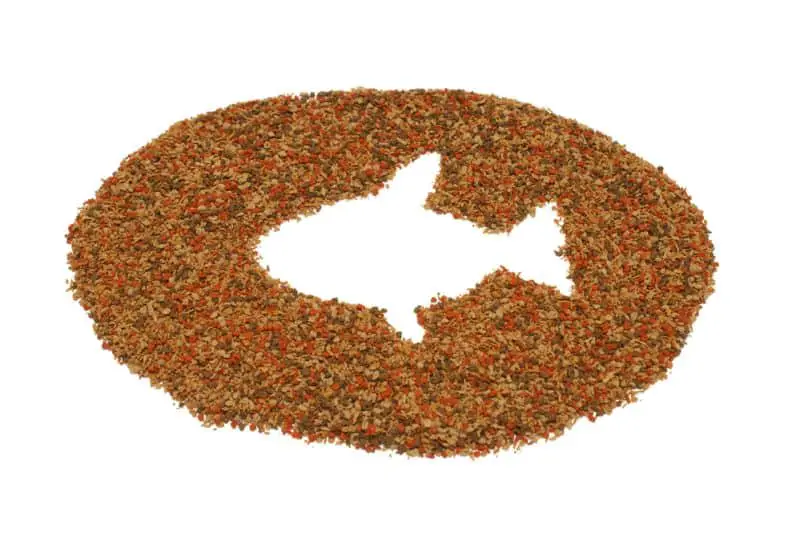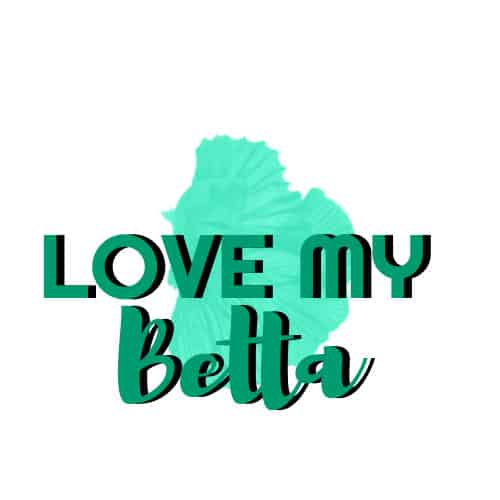Last Updated on May 19, 2021
And the answer to the question is yes.
Betta fish can eat bread, they enjoy nibbling on it as a snack or a special treat. But that does not mean you should include it in their diet. Your betta fish has specific dietary requirements that you should follow to maintain their health.
Table of Contents
Why you should not feed your betta with bread?
Pieces of bread and crackers are low in nutrients. Betta fish are carnivorous and require a high protein diet. And bread does not fit into the category. It contains a lot of additives that can put your betta at risk.
If it is a human, then you are giving it junk food.
Feeding your betta with bread can also trigger health risks. Remember that betta fish have sensitive stomachs. Pieces of bread or crackers swell when wet that can cause bloating or constipation to your betta fish.
Not to mention that they can get messy and can give you an unpleasant tank situation.
When can you feed your betta with bread? Are there other options?
As mentioned above, we can consider bread or crackers as a snack or a little treat for your betta. While bread is a poor alternative for betta fish food, you can feed them with it. This is especially necessary if you are running low on their regular food.
However, you can opt for a healthier choice if you have some vegetables in your fridge. You can boil vegetables such as peas, cucumbers, or zucchini to soften them up and remove their peels. This will make it easier for your betta to digest.
Your betta fish can also tolerate greens like lettuce and spinach. Wash the leaves and leave them in the microwave for 3 to 5 seconds for easier digestion.
Ensure that these snacks do not have any seasoning. The slightest bit of flavor can cause digestive problems to your betta fish.
Do not feed them with fibrous vegetables such as carrots and beans. These are too difficult to chew and can affect your betta’s digestion process. Avoid vegetables with bitter flavors like cabbage, Brussel sprouts, and broccoli. These also include onions, leeks, or shallots.
While vegetables are better than bread, you should not include these in your betta’s diet as well. Betta keepers may only consider these food alternatives when they are running out of betta fish food.
Related: Best Food for Betta Fish to Keep it Full and Well
Can you feed meat to your betta? Chicken, Beef, Pork?
While we stated that betta fish are carnivores, they might not eat land creatures in their natural habitat. But there are betta keepers who give their bettas small slices of meat from time to time as a treat.
Similar to vegetables, feed them with cooked meat and with no seasoning. It should also be easy to eat to aid in the digestion process.
However, farm-grown animals such as chicken, beef, and pork might be raised with chemicals that can be harmful to your betta.
What should I feed my betta fish?

In their natural habitat, bettas eat insects, bloodworms, daphnia, and brine shrimp, among others. Betta keepers usually feed them with live and frozen foods, freeze-dried foods, and pellets.
Live and Frozen Foods
Feeding your bettas with live foods can imitate their natural habitat. However, be careful when you purchase your live and frozen foods as they may carry parasites and other diseases.
One example of this food type is bloodworms. A lot of fish go crazy for bloodworms–betta fish included. You have the option to purchase live bloodworms or frozen ones available in tiny frozen cubes. You can also opt for dried bloodworms or bloodworm gel.
These are suitable for your betta fish, you only need to find which one they like best. You can start with live bloodworms as their movement attracts your betta’s attention.
Remember to limit feeding your betta with only one or two worms at a time. Throwing in more can overfeed your betta.
Refrain from refreezing unused worms, as it could have been exposed to bacteria. Refrigerate them for a maximum of two days and throw them after.
Freeze-Dried Foods
Brine shrimp, Daphnia, Tubifex are some freeze-dried foods that you can mix into your betta’s diet. While they cannot compare to live or frozen foods for quality, they are some of your betta’s natural food.
Compared to live and frozen foods, freeze-dried foods are safe from bacteria and parasites. They are also easy to source out at your local pet stores and are relatively inexpensive.
Increase the moisture content by soaking them in tank water to rehydrate them before feeding. Remember to not directly feed your betta fish with freeze-dried foods. Doing so can cause bloating and constipation problems.
You can feed them twice or thrice a week. Similar to live and frozen foods, do not refreeze leftover freeze-dried foods.
- aquarium DIET SUPPLEMENT Freeze-dried blood worms are a nutritious supplement to boost energy and conditioning in your aquarium fish
- FOR FRESHWATER & SALTWATER FISH Perfect for bettas and ideal for small- to medium-sized tropical and marine fish
- SPECIALLY PROCESSED Minimizes any undesirable organisms found in live bloodworms
- CHILD-SAFETY LID Tetra BloodWorms should be kept out of reach of children
- USAGE Feed 2 to 3 times a week in addition to staple diet only as much as your fish can consume within a few minutes
- Included Components: Tetra 16194 Bloodworms, 0.28-Ounce, 100-Ml
Prices pulled from the Amazon Product Advertising API on:
Product prices and availability are accurate as of the date/time indicated and are subject to change. Any price and availability information displayed on [relevant Amazon Site(s), as applicable] at the time of purchase will apply to the purchase of this product.
Pellets
Considered as the most common betta fish food, these are easy to find on your local market. Choose pellets with high-quality ingredients and fewer fillers.
Be cautious about pellets that expand considerably when wet. It is better to soak them in tank water to hydrate them before feeding. You can also look for ones designed to not expand when wet.
| Image | Title | Description | Buy |
|---|---|---|---|
 | Aqueon Goldfish Granules | Provides balanced nutrition for daily feeding of goldfish and other ornamental pond fish Formulated with natural ingredients and colors with added vitamins, minerals and trace nutrients for a healthy diet Helps support a healthy immune system and bring out the true colors of your fish Specially formulated so that fish utilize more of what they eat, creating less waste Feed in small amounts that fish will consume in under 2 minutes | Click Here |
 | Tetra Tropical XL Color Granules with Natural Color Enhancer | TROPICAL FORMULATION These slow-sinking granules are specially designed for use as a staple food for larger mid-water tropical fish FOR DAILY FEEDING Nutritionally balanced diet for optimal health color and vitality – supports a long life PROCARE FORMULA Helps support fish’s immune system for optimal health and long life CLEAR-WATER FORMULA Will not cloud water when used as directed COLOR ENHANCING Helps promote the development of vibrant colors in larger tropical fish Age Range Description: All Ages Included Components: Tetracolor Tropical Granules (10.58 Oz) | Click Here |
 | API Fish Food PELLETS, Formulated to Help Fish More readily use nutrients which Means Less Waste and Clean, Clear Water, Feed up to Twice a Day as Much as They'll eat in 5 Minutes | Contains one (1) API BOTTOM FEEDER PELLETS WITH SHRIMP Fish Food 7.9-Ounce Container Includes optimal protein sources to support healthy fish and ideal growth Contains shrimp pellet, mussel, and seaweed for improved nutrition and great taste Formulated for easy digestion, leading to less toxic ammonia and cleaner, clearer water Feed as much as fish can consume in 30 minutes as bottom feeders have slower feeding habits | Click Here |
 | Wardley Pond Fish Food Pellets | Highly digestible formula specially designed for the energy needs of koi and goldfish Includes 17 ounces of floating pond pellets with a scientifically balanced protein-to-fat ratio which supports healthy growth and helps maintain clean water Fortified with a stabilized form of vitamin C that promotes a healthy immune system in fish Scientifically designed to fulfill the energy needs of koi and goldfish. Light in weight but heavy in nutrition Enjoyed by all pond fish | Click Here |
Feeding tips for your bettas
Regular feeding schedule
It is important to have a feeding schedule for your betta fish. Feed them twice a day at 12 hours intervals.
Related: How Long Can Betta Fish Go Without Food?
Do not overfeed your betta fish
Check on your fish after you throw in the food. If your betta hasn’t eaten all the food for two minutes, take out the leftovers. Its stomach is tiny, as is the size of one of its eyes.
Overfeeding your betta can lead to some serious health problems.
Check on what they want to eat
Bettas are fussy eaters. They might not want what you feed them so always observe the food they eat. You can try some freeze-dried foods but know that you can never go wrong with live food.
Final Thoughts
While this article has enumerated other options to feed your betta, betta fish have their own nutritional requirements to stay healthy and alive.
You could feed them with human foods such as bread, but you should not consider it on their regular diet. They can only be a snack or a treat that you could give occasionally.
As mentioned, a few times in this article, your bettas have sensitive digestive systems. You should be careful with what you feed them.
Related: Betta Fish Doesn’t Eat: Everything You Need to Know

